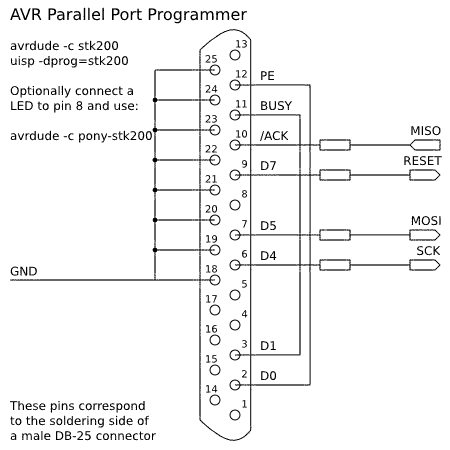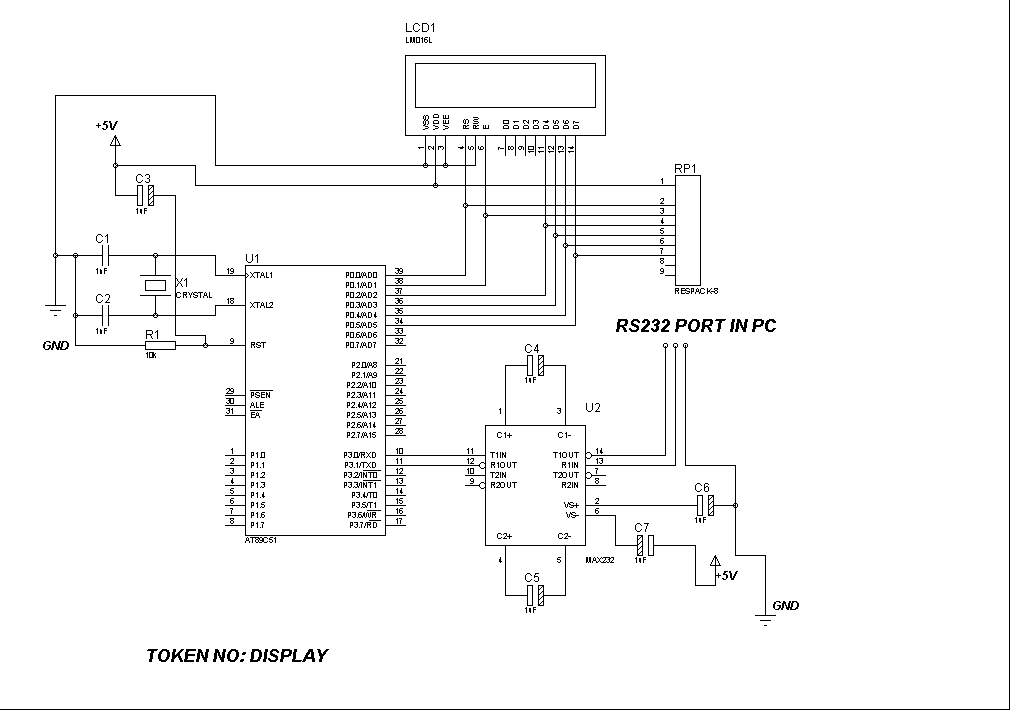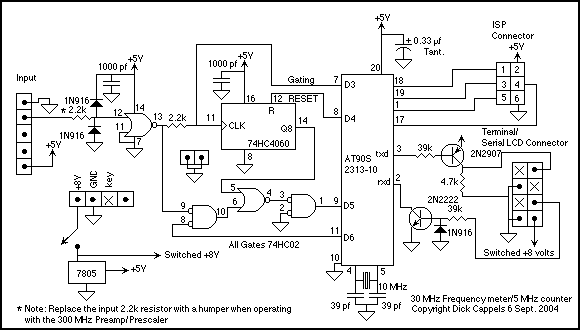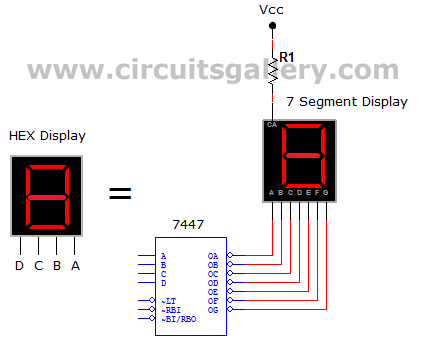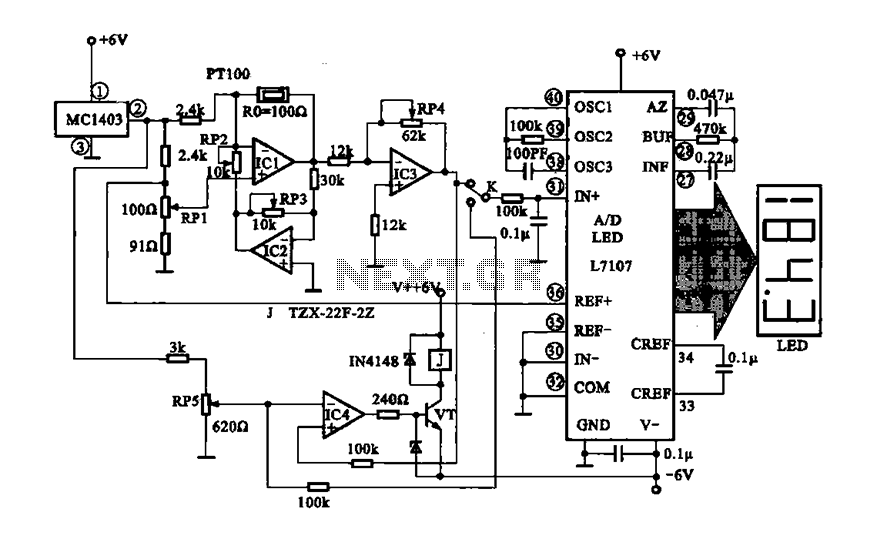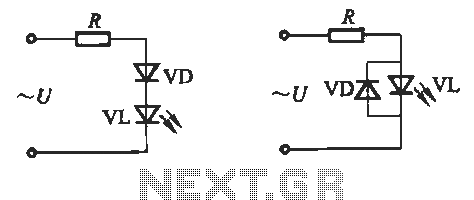
AVR ISP ScoketBoard
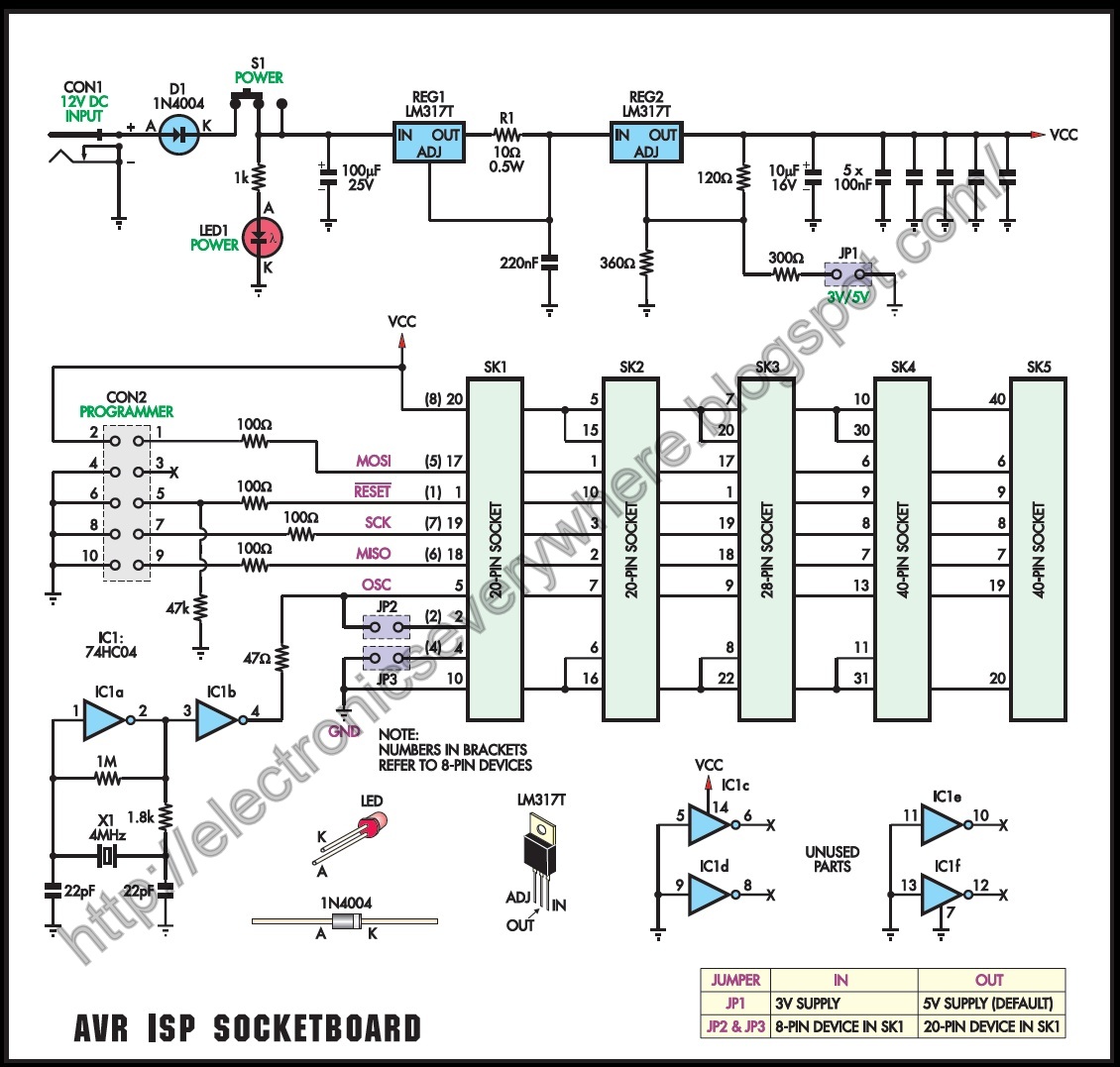
Most Atmel AVR microcontrollers can be programmed via their built-in serial programming interfaces (SPI). This method is ideal for in-situ programming, which may be used in manufacturing, firmware development, or field upgrades. In this scenario, the microcontroller remains in its socket on the application board while a low-cost in-system programmer (ISP) is plugged into a dedicated programming header. Consequently, the microcontroller does not need to be removed from its socket for firmware updates. However, in some cases, it is desirable to program a microcontroller stand-alone, such as when the application board is unavailable or does not include an ISP (or JTAG) header. A cost-effective method of stand-alone programming may also be beneficial for small prototype runs where the expense of a commercial parallel programmer is prohibitive. The AVR ISP SocketBoard addresses this need by providing the essential functions for in-system programming, including a regulated power supply, clock source, and microcontroller IC socket. To use the SocketBoard, connect the in-system programmer to a PC, plug its ISP cable into the on-board header, and add a DC plug pack. The SocketBoard features five programming sockets, one for each group of microcontrollers with common SPI pinouts. This design eliminates the need for switching logic that would have been necessary with a single 40-pin socket, simplifying both design and construction. It is anticipated that many users will install only one or two programming sockets, depending on their requirements, to minimize costs. An overlay diagram lists specific device types and the corresponding sockets (SK1 to SK5) that support them. For instance, to program the ATMega16, socket SK4 must be installed. The board is compatible with standard zero insertion force (ZIF) sockets for cases where multiple chips need programming; however, ZIF sockets are not necessary for occasional programming, as they would be unnecessarily expensive. The unit can be powered by a 12V DC 150mA (or higher) unregulated plug pack, which also powers the ISP programmer when connected to the on-board header. The SocketBoard provides the minimum functions necessary for in-system programming, including a series of programming sockets for different types of AVR micros, a regulated power supply, and a clock source. The power supply utilizes two series-connected LM317 adjustable positive regulators. The first regulator functions as a current limiter; under normal conditions, it does not affect operation, but if the current through R1 increases to a level where approximately 1.25V is dropped across it, REG1 reduces the voltage at its OUT terminal, acting as a constant current source and limiting output current. The setup typically consumes an average of 20 to 40mA, depending on the type of in-system programmer connected, with an additional capacity of 85 to 105mA, providing a margin that protects the microcontroller against reversal in the socket and safeguards other components if a short-circuited microcontroller is inserted. The second regulator (REG2) is configured as a conventional voltage regulator; without JP1 installed, it outputs +5V to power the system, while installing JP1 reduces this to +3V, which may be useful for verifying memory in microcontrollers intended for 3V systems. In addition to power, AVR microcontrollers require a clock source for their internal programming circuits to function effectively.
The AVR ISP SocketBoard is designed to facilitate the programming of various AVR microcontrollers in a versatile and cost-effective manner. Its architecture allows for easy connectivity to both in-system programming tools and external power sources, while its multiple socket options cater to a range of microcontroller types, ensuring compatibility and flexibility for different applications. The implementation of adjustable voltage regulators enhances the board's functionality, providing users with the ability to adapt to various programming requirements, particularly for low-voltage microcontrollers. The careful consideration of current limiting and protection features further reinforces the reliability of the SocketBoard, making it an essential tool for developers and manufacturers working with AVR microcontrollers. The overall design promotes efficient programming processes, whether in a manufacturing environment or for individual development purposes, thus streamlining workflows and reducing the need for expensive programming equipment.Most Atmel AVR microcontrollers can be programmed via their in-built serial programming interfaces (SPI). This method is ideal for in-situ programming, such as might be used in manufacturing or for firmware development or field upgrades.
In this scenario, the micro remains in its socket on the application board and a low-cost in-system programmer(ISP) is plugged into a dedicated programming header. In other words, the microcontroller does not have to be removed from its socket and plugged into a parallel programmer each time a firmware update is required. However, in some cases it is desirable to programme a microcontroller stand-alone, such as when the application board is unavailable or doesn`t include an ISP (or JTAG) header.
A low-cost method of stand-alone programming might also be useful where a batch of chips is needed for a small prototype run and the cost of a commercial parallel programmer is prohibitive. This is where the AVR ISP SocketBoard comes in. It provides the minimum of functions necessary to support in-system programming, including a regulated power supply, clock source and microcontroller IC socket.
Just connect your in-system programmer to a PC, plug its ISP cable into the SocketBoard`s on-board header and add a DC plugpack. You`re then ready to start programming! As you can see from the photos, the SocketBoard contains five programming sockets. Why so many Well, we`ve provided one programming socket for each group of micros with common SPI pinouts.
This allowed us to eliminate the switching logic that would have been required if we`d used just a single, 40-pin socket, so greatly simplifying design and construction. We expect that many constructors will install just one or two programming sockets (depending on their requirements), to keep costs as low as possible.
The overlay diagram (Fig. 2) lists specific device types and the sockets (SK1 to SK5) that support them. For example, to program the ATM ega16, socket SK4 must be installed. For cases where quantities of chips need to be programmed, the board will accept standard zero insertion force (ZIF) sockets as well. There is absolutely no need to install ZIF sockets (as shown in our photos) for occasional programming; this would simply be expensive overkill.
The unit can be powered from a 12V DC 150mA (or higher) unregulated plugpack, which also powers the ISP programmer when it`s plugged into the on-board header. As mentioned, the SocketBoard provides the minimum of functions necessary to support in-system programming.
As stated, this includes a series of programming sockets to accommodate the different types of AVR micros, a regulated power supply, and a clock source. The power supply is based around two series-connected LM317 adjustable positive regulators (see Fig. 1). The first regulator acts as a current limiter. In normal operation, it performs no function. However, should the current through R1 increase to a level where about 1. 25V is dropped across it, REG1 begins to reduce the voltage at its OUT terminal. In effect, REG1 then acts as a constant current source, limiting output current to a In normal operation, the complete setup consumes an average of about 20 to 40mA, depending on the type of in-system programmer connected.
The remaining capacity (85 to 105mA) leaves a comfortable margin, which in most cases is still low enough to preserve any micro that might be accidentally reversed in a socket. It also protects other components if an internally short-circuited micro is plugged into a socket. The second regulator (REG2) is configured as a conventional voltage regulator. Without JP1 installed, it produces +5V to power the system. Installing JP1 reduces this to +3V. Some constructors may find this lower voltage useful for verifying the memory in micros that are destined for 3V systems.
As well as power, AVR micros require a clock source for their internal programming circuits to o 🔗 External reference
The AVR ISP SocketBoard is designed to facilitate the programming of various AVR microcontrollers in a versatile and cost-effective manner. Its architecture allows for easy connectivity to both in-system programming tools and external power sources, while its multiple socket options cater to a range of microcontroller types, ensuring compatibility and flexibility for different applications. The implementation of adjustable voltage regulators enhances the board's functionality, providing users with the ability to adapt to various programming requirements, particularly for low-voltage microcontrollers. The careful consideration of current limiting and protection features further reinforces the reliability of the SocketBoard, making it an essential tool for developers and manufacturers working with AVR microcontrollers. The overall design promotes efficient programming processes, whether in a manufacturing environment or for individual development purposes, thus streamlining workflows and reducing the need for expensive programming equipment.Most Atmel AVR microcontrollers can be programmed via their in-built serial programming interfaces (SPI). This method is ideal for in-situ programming, such as might be used in manufacturing or for firmware development or field upgrades.
In this scenario, the micro remains in its socket on the application board and a low-cost in-system programmer(ISP) is plugged into a dedicated programming header. In other words, the microcontroller does not have to be removed from its socket and plugged into a parallel programmer each time a firmware update is required. However, in some cases it is desirable to programme a microcontroller stand-alone, such as when the application board is unavailable or doesn`t include an ISP (or JTAG) header.
A low-cost method of stand-alone programming might also be useful where a batch of chips is needed for a small prototype run and the cost of a commercial parallel programmer is prohibitive. This is where the AVR ISP SocketBoard comes in. It provides the minimum of functions necessary to support in-system programming, including a regulated power supply, clock source and microcontroller IC socket.
Just connect your in-system programmer to a PC, plug its ISP cable into the SocketBoard`s on-board header and add a DC plugpack. You`re then ready to start programming! As you can see from the photos, the SocketBoard contains five programming sockets. Why so many Well, we`ve provided one programming socket for each group of micros with common SPI pinouts.
This allowed us to eliminate the switching logic that would have been required if we`d used just a single, 40-pin socket, so greatly simplifying design and construction. We expect that many constructors will install just one or two programming sockets (depending on their requirements), to keep costs as low as possible.
The overlay diagram (Fig. 2) lists specific device types and the sockets (SK1 to SK5) that support them. For example, to program the ATM ega16, socket SK4 must be installed. For cases where quantities of chips need to be programmed, the board will accept standard zero insertion force (ZIF) sockets as well. There is absolutely no need to install ZIF sockets (as shown in our photos) for occasional programming; this would simply be expensive overkill.
The unit can be powered from a 12V DC 150mA (or higher) unregulated plugpack, which also powers the ISP programmer when it`s plugged into the on-board header. As mentioned, the SocketBoard provides the minimum of functions necessary to support in-system programming.
As stated, this includes a series of programming sockets to accommodate the different types of AVR micros, a regulated power supply, and a clock source. The power supply is based around two series-connected LM317 adjustable positive regulators (see Fig. 1). The first regulator acts as a current limiter. In normal operation, it performs no function. However, should the current through R1 increase to a level where about 1. 25V is dropped across it, REG1 begins to reduce the voltage at its OUT terminal. In effect, REG1 then acts as a constant current source, limiting output current to a In normal operation, the complete setup consumes an average of about 20 to 40mA, depending on the type of in-system programmer connected.
The remaining capacity (85 to 105mA) leaves a comfortable margin, which in most cases is still low enough to preserve any micro that might be accidentally reversed in a socket. It also protects other components if an internally short-circuited micro is plugged into a socket. The second regulator (REG2) is configured as a conventional voltage regulator. Without JP1 installed, it produces +5V to power the system. Installing JP1 reduces this to +3V. Some constructors may find this lower voltage useful for verifying the memory in micros that are destined for 3V systems.
As well as power, AVR micros require a clock source for their internal programming circuits to o 🔗 External reference
Warning: include(partials/cookie-banner.php): Failed to open stream: Permission denied in /var/www/html/nextgr/view-circuit.php on line 713
Warning: include(): Failed opening 'partials/cookie-banner.php' for inclusion (include_path='.:/usr/share/php') in /var/www/html/nextgr/view-circuit.php on line 713
